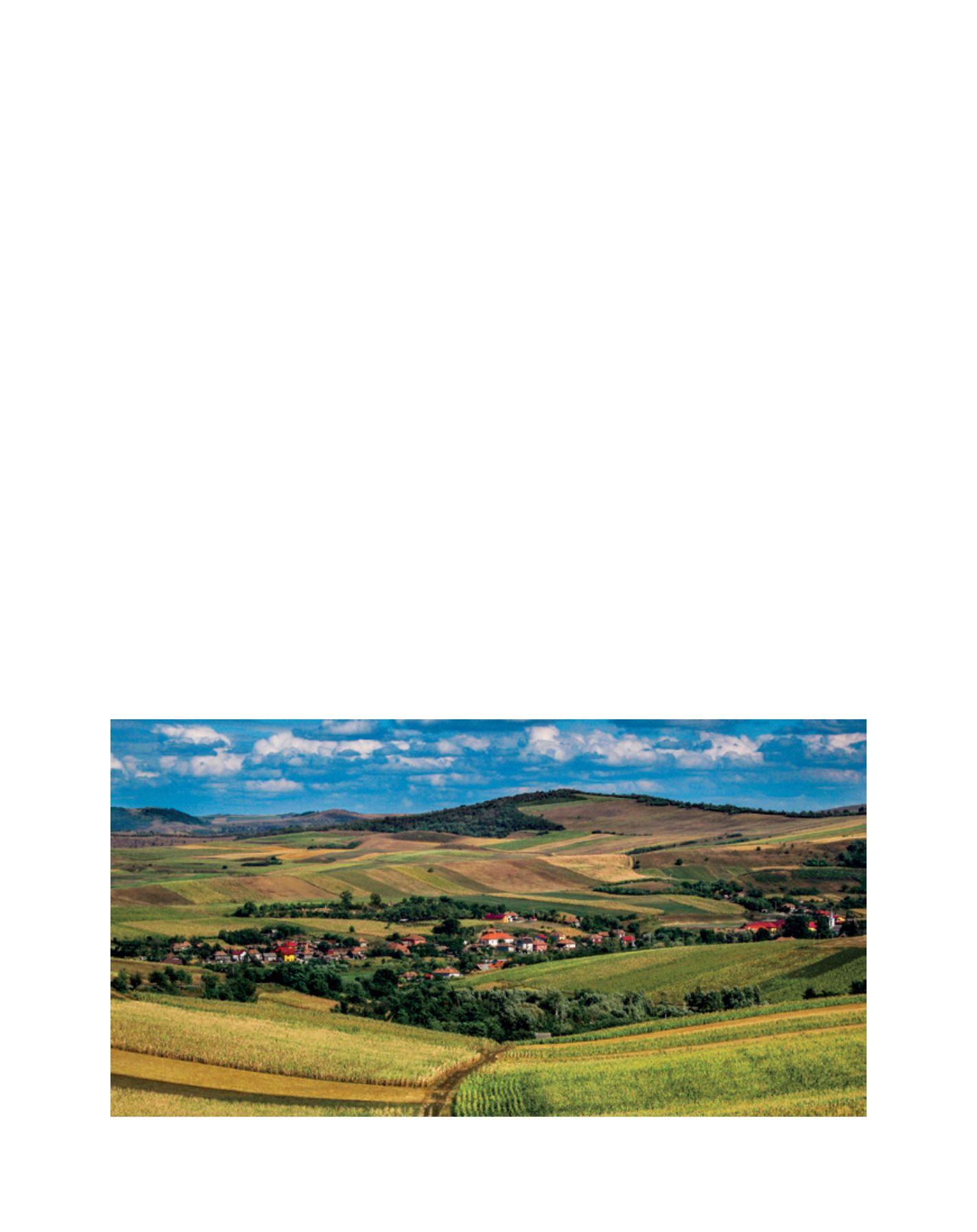

[
] 154
of communism made people very reluctant to join any form
of association; families individually worked the small and
fragmented parcels of land inherited from their pre-war
ancestors. The persistence of the fragmented land structure
of Romania through the last 20 years, despite the expecta-
tions of many land consolidation experts, is largely due to
the important role subsistence and semi-subsistence farming
plays in providing livelihoods where pension and welfare
payments are extremely low, food prices are similar to those
in developed countries, and access to credit is very difficult.
These small-scale farmed landscapes, strongly associated with
family farming, are still under increasing pressure due to loss
of economic viability, failure to provide adequate living condi-
tions for young farmers, and resulting abandonment.
Taking land away from the families had a huge negative
impact on rural social consciousness and the effects of this
can be seen today. Rural society was shaken to its core. Family
values and traditions built over centuries were lost, the land-
scape and the environment suffered and the peasants were in
a great distress, not being able to secure their most vital needs.
Irreversible damage was also done due to huge migration from
the villages to areas where people could earn a short-term,
non-sustainable living. Abandoned villages and families found
themselves rethinking what their real values were.
Smallholding-based production has persisted, especially
in Romanian mountains and upland regions. However, live-
stock numbers have fallen since 1990, initially as a result of
the dissolution of state and cooperative farms, and later due
to rises in input costs and loss of market share, as a result
of cheap imports after Romania’s accession to the European
Union (EU) in 2007. The sharpest decrease in cattle numbers
began in 2009 when the milk market failed. Many small
farmers sold their cattle because the milk price was too low.
Worldwide, and in Romania alike, the trend was to develop a
performing agriculture. Subsidies helpmostly large farms achieve
performance, but they had almost no impact on the poverty of
rural areas. This bipolarity has been increasing over time.
It is painful to accept and understand the damage done
by the shift away from the cell on which rural development
was based: small scale family farming. The International Year
of Family Farming comes at a good time to spotlight these
unfair development paradigms and points to the importance
of insuring a decent living for humankind.
If support has so far gone mostly to developing large-scale
agriculture, it is now time to reconsider this approach and
to increase the support for family farms, in order to achieve
sustainable development. Family farms are the prevalent
agricultural model and the most important food supplier in
developed countries and in developing nations alike. Family
farms use environmentally friendly techniques, can offer excel-
lent quality products and keep rural areas alive. Small- and
medium-scale agriculture employs a large number of farmers
and our objective should be to assist them in gaining access to
knowledge and to markets. Family farms are not only occupied
with agriculture, they also lead important community social
activities, they preserve traditions and develop crafts, they help
tourists discover rural areas and, by using extensive agricultural
practices, they help protect the environment.
Small-scale farms have the power to build a network
capable of organizing production and distribution chains
that bring their products straight to the consumer market
and provide work at a local level. Those products can also be
used by public institutions and administrations, local restau-
rants and hotels, so developing the economy in the region.
Local food systems stimulate the growth of local economies;
global food systems only help a few. Developing the family
Image: Ministry of Agriculture and Rural Development of Romania
Family farms use the land around their houses and keep rural areas alive by preserving traditions and enabling rural tourism
D
eep
R
oots
















